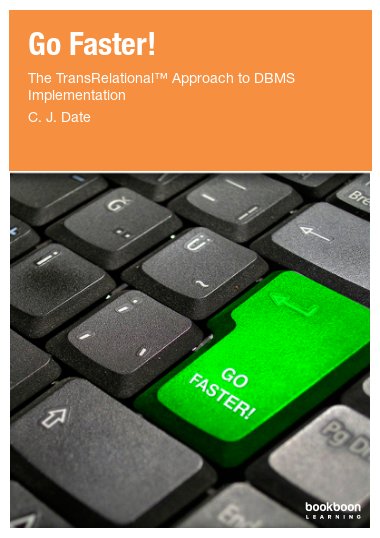Use Go Faster! The TransRelational™ Approach to DBMS Implementation to Improve the Performance of Your Database
Go Faster! The TransRelational™ Approach to DBMS Implementation is an ebook to download free of charge.
In the database world, the relational model of database management was a massive leap forward, hailed as a breakthrough idea. Critics, however, pegged it as difficult, if not impossible, to implement in an efficient manner. Database administrators worked over the years to improve performance and have met with some success. Unfortunately, database management products have since become increasingly complex and unwieldy. But now there is another option.
Author C.J. Date, an expert in relational database technology, says the next “quantum leap” is the TransRelational Approach. This is a new and dramatically different way to implement the relational model for databases. The TransRelational Approach is faster than today’s SQL database products, with greater data independence. In addition, database administrators will find their jobs to be far simpler after implementing the TransRelational Approach.

